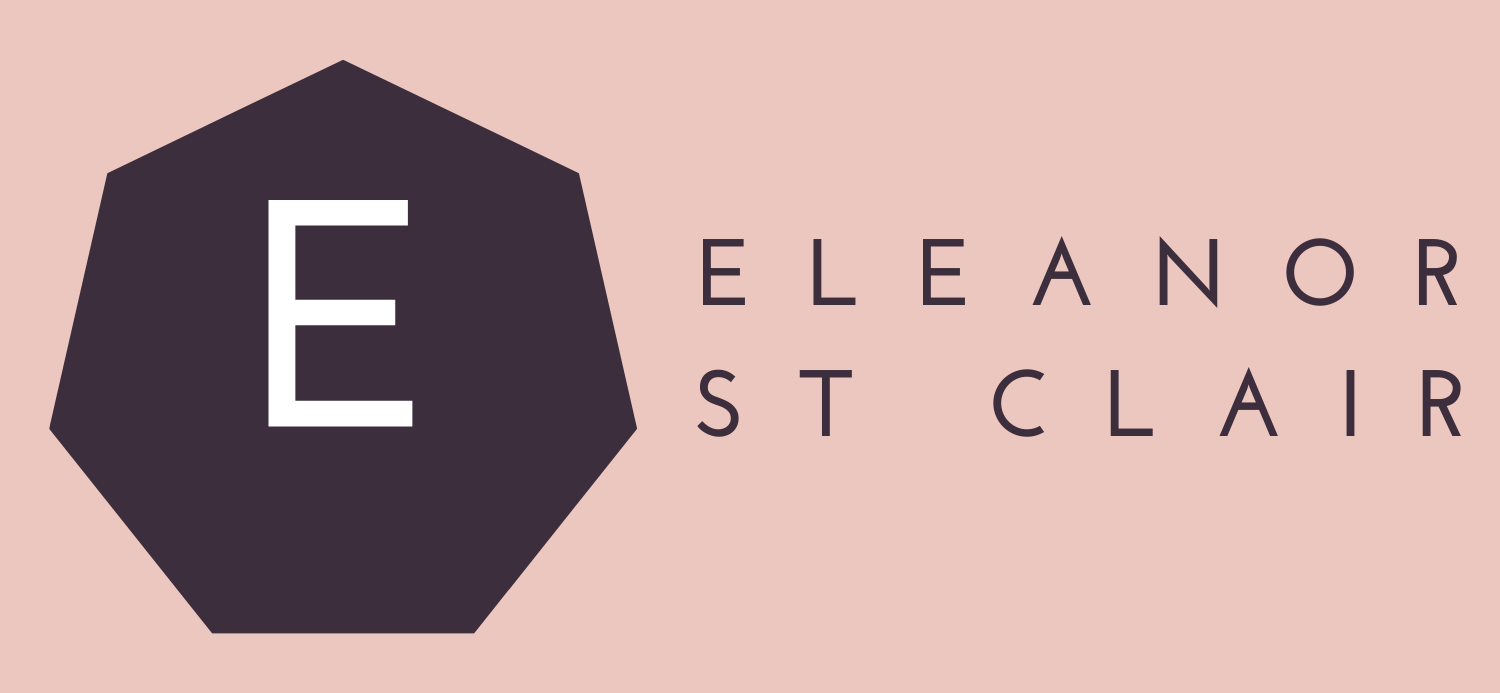The Double Diamond design process model was developed through in house research by the Design Council in 2005 as a simple way of describing the design process. It is a structured design approach to tackle challenges in four phases, Discovery, Definition, Development and Delivery.
This is a method I came across at the design agency I work at; it is the way they come up with ideas for campaigns. The Double Diamond encourages you to think wide before narrowing in on an option. I find it really useful when I am writing a story for a competition that has a narrow theme, it forces inspiration and helps me to beat the “blank-page” syndrome.

I have tweaked this design tool a bit (a lot) to work for story writing so it goes a bit like this. Let’s start with an example. Here is a competition from a magazine I subscribe to. The theme is food, which is quite broad.

Discover:
Write down everything you can think of that relates to the theme of the story, even if it seems like it might be useless. If a word pops into your head, write it down. I find it useful to impose a five-minute time limit here. Lots of the things you write down will be personal; they will be objects that already have stories.
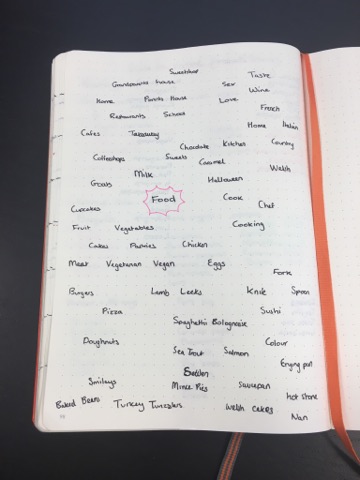
For example, in the page above, the words Sewen, Spaghetti Bolognese and Mince Pies might not mean much to other people. Why those foods? Well, Sewen is what the Welsh call sea trout and my Dad was a keen fisherman. I was brought up learning how to gut and prepare sea trout for dinner.
Spaghetti Bolognaise was what my mum cooked every time my cousins came over because she knew they liked it, but now they think a visit to my parents’ house isn’t complete without it.
And Mince Pies? Well, my best childhood friend and I would make them every year. I have tried to make them in recent years without her, but my crust is always too hard, or they burst, or just don’t taste right. I cannot make them properly without her.
All three foods bring back very specific memories of my childhood kitchen.
Define:
Start joining the words together, do any of them relate to each other? Can you see any stories begin to stem from them? Keep going until you have linked most of the words to at least one other word.
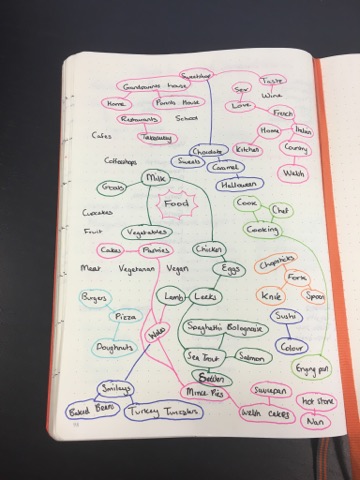
Now you can start crossing the words out but don’t rub them out, use a single line through the middle so you can still see what the word says.
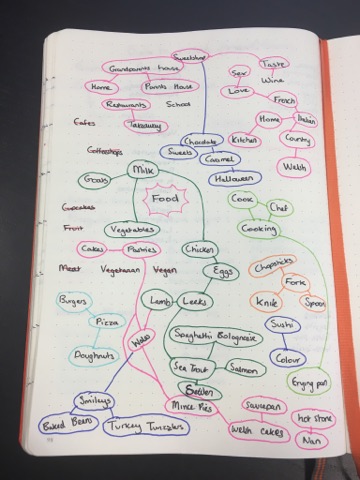
Each of the lines I have here in different colours is a different memory or experience, the words fit together to remind me of something. Some of the words fit together in a way I would not have thought about before seeing them on the page, for example, the mince pies and the Welsh cakes my Nan used to make. I circled these in the same colour, as even though the two memories are not directly related, they are both memories from my childhood.
So you can see, this process has brought about many different points of inspiration, just from the second part. However, I can’t just write these experiences down. I need to further develop them.
Develop:
Choose two or three of the ideas and create characters that could live in these worlds. If the idea is a character, create a world that character could occupy. You should think about the conflict of the story at this stage.

For my first idea, I combined the mince pie story with the welsh cakes, as the welsh cakes open other memories, my Nan cooking them before we came over to her house, and when she had important guests she would sprinkle them with sugar.
Deliver:
Choose the most promising idea and write the first paragraph. If it feels right, finish the story. But it has to feel right after the first paragraph. You can’t give up after the second or third, once you commit, finish it. If you get stuck, go back to your original cloud of words and choose a word that didn’t connect with your original idea. Work this word into your story. Edit the story.
Result
This brainstorm session resulted in a story that I entered into the competition above. One of my ambitions for this year is to enter more short story competitions (not hard seeing as last year I didn’t enter a single one) so I am really pleased that this is my second competition entry. I am not expecting anything but I hope to enter at least six more by December.
I really like this other visual representation I found of the Double Diamond.
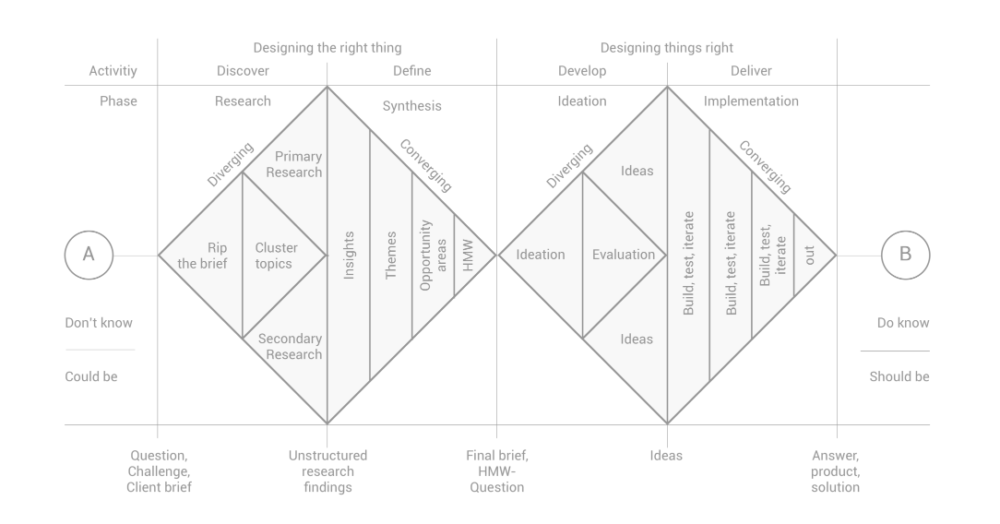
Note: I don’t use this method every time. Very often a story just happens, I start writing and the plot develops organically, but for a competition that has a very narrow theme, I find this method helps to broaden the story I want to write, keeping it fresh and interesting.
